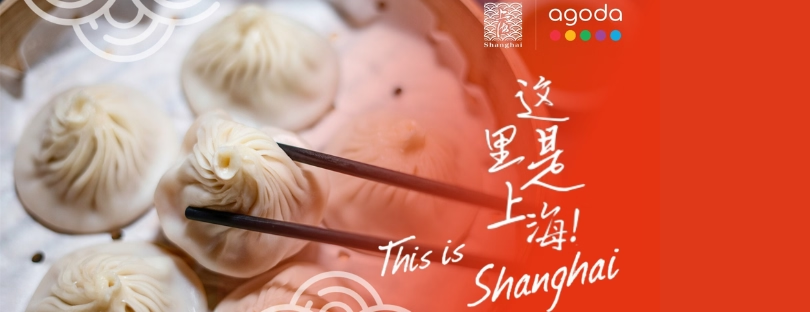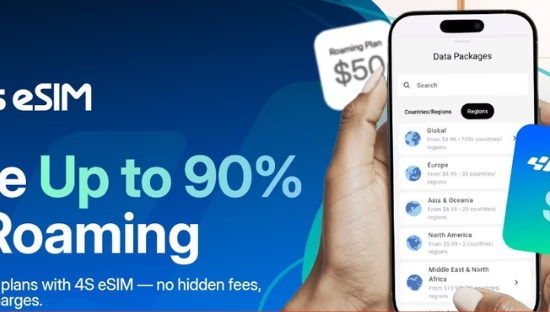
Shanghai and Agoda Team Up to Boost Inbound Travel With a New Hotel Deal
Shanghai is making another strategic move to welcome more international travelers—and this time, it’s teaming up with Agoda to do it. In a fresh partnership with the Shanghai Municipal Administration of Culture and Tourism, Agoda has launched an exclusive hotel campaign called “This is Shanghai”, aimed squarely at boosting inbound tourism from key emerging markets. Shanghai hotel deals
If you’re traveling from Thailand, Malaysia, Indonesia, Singapore, the UAE, Qatar, or Saudi Arabia, you now get 5% off your total booking—capped at 50 RMB—when reserving hotels in Shanghai via Agoda. It’s not a massive discount, but it’s a smart entry point designed to nudge more regional travelers to finally make that Shanghai trip they’ve been bookmarking for years.
What the deal actually includes
More than 3,000 hotels are part of the promotion, covering everything from budget-friendly stays to polished international chains. They’re spread throughout Shanghai’s most sought-after districts:
Some traveler favorites included in the promotion:
- Hotels around The Bund
- Boutique stays in Xintiandi
- High-rise luxury in Lujiazui
- Family-friendly options near Shanghai Disney Resort
- Riverside escapes around Zhujiajiao Water Town
This gives visitors flexibility: whether they want skyline views, culture-heavy neighborhoods, nightlife, or theme parks, there’s a discounted option in the mix.
And let’s be honest—Shanghai is one of those cities where location shapes the whole trip. A hotel near Nanjing Road hits differently than a quiet alleyway stay near Yuyuan Garden. With 3,000 choices, the promotion feels more like a destination-wide welcome gesture than a narrow marketing push.
Why Shanghai is doing this now
The tourism office has been clear: this move is part of a wider strategy to make inbound travel smoother and more appealing, especially for travelers from fast-growing markets in Southeast Asia and the Middle East. These are regions where demand for short urban getaways is rising sharply, fueled by visa relaxations, affordable flights, and a growing appetite for tech-driven travel planning.
Digital platforms are central to that strategy. Instead of relying only on traditional media campaigns or tour partnerships, Shanghai is leaning into platforms people already use—mobile-first tools that simplify discovery, booking, and payment. The city has been gradually modernizing its visitor experience, and this partnership fits neatly into that direction.
Agoda’s Head of Greater China highlighted that the platform is prepared to support travelers with multilingual interfaces, localized payment methods, and seamless end-to-end booking. This matters a lot more than most people think: the more frictionless the booking experience, the more likely visitors are to choose a destination they may not have visited before.
How long does the promotion last
The campaign runs until January 2026, making it one of the longer-term tourism partnerships in the region. That extended timeline signals that this isn’t a quick promotional burst—it’s part of a multi-year strategy to rebuild and reinforce Shanghai’s inbound numbers.
Travelers simply need to visit Agoda’s website or app and search for “Shanghai Promotion” to find eligible hotels.
What this means for Shanghai’s tourism landscape
Shanghai’s collaboration with Agoda isn’t happening in a vacuum. Across Asia, rival urban destinations—Singapore, Seoul, Bangkok, and Dubai—are all heavily investing in digital-first tourism campaigns, often in partnership with booking giants like Booking.com, Trip.com, Traveloka, or Expedia.
Shanghai is playing catch-up in some areas but also carving out its own angle:
- Localized payment options for Middle Eastern and Southeast Asian travelers put the city ahead of many regional competitors.
- A long-term promotional window (18+ months) is more generous than the typical 3–6 month bursts used in similar campaigns.
- The scale—3,000+ hotels—is among the broadest of any city-level hotel promotion in Asia.
Interestingly, other major players have taken similar approaches. Singapore has partnered with Booking.com on themed campaigns; Seoul frequently collaborates with global OTAs for discount-driven pushes; Dubai leans heavily on influencer-driven digital marketing paired with platform-specific deals. These cases show a clear pattern: cities that embrace OTA partnerships tend to see faster post-pandemic recovery and more diverse inbound traveler mixes.
The trend aligns with data from organizations like the UNWTO and the Pacific Asia Travel Association (PATA), which both highlight the role of mobile-first travel platforms in driving recovery, especially among younger, high-intent travelers in emerging markets.
Travel Tips: Quick Picks for Your Shanghai Trip
Looking for a hotel that’s close to the action? Here are a few areas that make your trip smoother—and often cheaper if you book smartly through Agoda.
Where to stay near the top attractions
- For skyline views: Lujiazui is your spot. Hotels here put you right next to Shanghai Tower and the Pearl Tower.
- For shopping and nightlife: Xintiandi and Nanjing Road are packed with boutiques, cafes, and pedestrian-friendly streets.
- For families: Staying near Shanghai Disney Resort cuts your commute to almost zero and makes early park entry less stressful.
- For culture lovers: The Bund and Yuyuan Garden areas give you easy access to historic architecture and traditional streets.
Getting around the city
Shanghai’s metro is one of the most efficient (and cleanest) in Asia. Most major attractions sit along Line 2, which also connects both airports—Pudong (PVG) and Hongqiao (SHA).
- Metro rides usually cost 3–6 RMB, so it’s the cheapest—and often fastest—way to get around.
- Taxis are reliable and still affordable for short rides, and ride-hailing apps like DiDi are fully supported in English.
Quick ticketing tips
- Shanghai Disney Resort: Book your tickets online at least a few days in advance; peak days sell out fast.
- Oriental Pearl Tower & Shanghai Tower: Buying timed-entry tickets online helps you skip long afternoon queues.
- Zhujiajiao Water Town: You can grab tickets on-site, but many travelers prefer bundled tickets via OTAs because they include canal boat rides or shuttle transfers.
Things to do between check-in and check-out
If you’re short on time, hit these essentials:
- A sunset walk along The Bund
- Dim sum or Shanghainese noodles in Xintiandi
- A few quiet hours wandering Yuyuan Garden
- A night cruise on the Huangpu River
- Boutique shopping in Tianzifang
Conclusion—Where this strategy fits in the bigger picture
Shanghai’s partnership with Agoda isn’t just another discount campaign—it’s a signal of how major cities are competing for the next generation of travelers. The focus on emerging markets, the reliance on digital infrastructure, and the broad hotel participation show that Shanghai wants to grow not only visitor numbers but also the diversity and frequency of inbound trips.
Compared to similar regional moves, Shanghai’s approach stands out for its scale and long-term vision. Platforms like Booking.com, Trip.com, and Expedia are all increasingly used by Asian destinations to boost inbound flows, but Agoda’s strength in Southeast Asia and the Middle East gives Shanghai a very targeted advantage. For travelers, the campaign removes small but meaningful barriers—language, payment, and affordability—making a trip to Shanghai feel easier and more intuitive.
If the trend continues, we’ll likely see more partnerships like this, with deeper personalization, more bundled experiences, and smarter use of real-time travel data. For now, though, “This is Shanghai” is a strong, well-timed move that positions the city firmly back on the global travel map. Shanghai hotel deals











